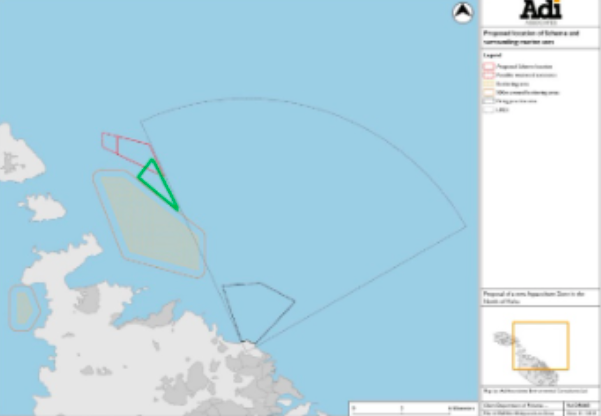Qala Local Council Suggests Alternative Tuna Fish Farms Relocation To Protect Swimmers

The Qala local council has called for an alternative siting of the North Aquaculture Zone in order to protect bathing waters in the southern area of Gozo.
Voicing its concerns, the council has called for an alternative area within the same zone to safeguard areas used by swimmers and divers.
“In view of the imminent public hearing associated with the proposed North Aquaculture Zone (NAZ), the Qala local council voices its grave concerns over the preferred location at sea being identified for the same NAZ and calls for an alternative siting of the same Zone so as to safeguard the quality of bathing waters along the south coast of Gozo,” the local council said in a statement.
Similarly to the designation of the South Aquaculture Zone, which is located roughly 6km off the south-east of Malta, the NAZ would group in a single polygon, measuring 4.5 square kilometres, all the blue-fin tuna rearing facilities currently located in waters off the north of the archipelago.
The main scope of such aquaculture zones is to relocate all aquaculture facilities from coastal waters to relatively offshore ones, thus mitigating the occurrence of effluents originating from the same facilities within bathing areas.
Consequently, the concept of a NAZ, which has been actively pursued by the Department of Fisheries and Aquaculture since 2011, is a valid one since it is not feasible to aggregate all local tuna-rearing facilities within the South Aquaculture Zone.
However, concerns and misgivings exist over the location currently being proposed for the siting of the NAZ, which is expected to house a total of 4,500 tons of bluefin tuna biomass, a marked increase over the current capacity (3,300 tonnes) held by the AJD facility further to the south-east.
These concerns have in turn led the Qala local council to engage the services of marine biologist Alan Deidun as a consultant, in order to critically evaluate the findings of the NAZ siting Environment Impact Assessment (EIA) study.
As part of the EIA exercise, a hydrodynamic study was commissioned so as to anticipate the dispersal of the same fish oil under two different scenarios – one characterised by strong North West winds and one characterised by strong North-East winds.
This study concluded that:
1. A total of 10m squared of fish oils per day are expected to be released by the tuna penning operations arising from the total 5,500kg of baitfish fed to each cage on a daily basis;
2. The fish oil slick (consisting of fish oils, melting ice, body fluids, and fish mucus) is expected to be generated twice a day, in synch with tuna feeding operations, in the morning and in the afternoon
3. Under ‘Scenario two’ conditions (wind blowing predominantly from the East, a scenario which arises on approximately 28% of all days, considering both NE and E wind directions), the fish oil plume disperses westwards, reaching the south Gozo coast in just 17 hours if there is no containment.

Therefore, the council is suggesting an alternative location for the NAZ, slightly to the southeast of the proposed NAZ, as shown in the green polygon in the illustration above.
This would have a multitude of advantages, such as:
1. It does not impinge on the ‘il-Baħar Madwar Ghawdex’ SPA, as the proposed NAZ
location will.
2. It will represent a lower probability of the anticipated fish oil slick reaching the south. Gozitan coastline due to sheltering by the eastern coastline of the island of Comino for most (but not all) of the easterly wind directions.
3. It will represent more congenial operational water depths for the tuna penning industry given that water depths within the proposed new site are shallower than those within the proposed NAZ.
What do you make of these suggestions?
